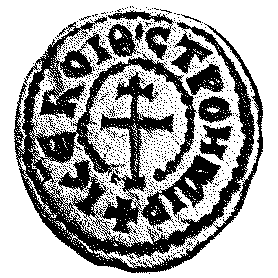In his work De administrando imperio, Emperor Constantine Porphyrogenitus describes the Serbs. According to his statements, Serbs are descended from the so-called White Serbs, settled on the other side of Turkey (Hungary). Serbs call that country Bojki/Boiki. According to some historians, it is Bohemia, the Czech Republic, but these claims are not reliable.
But how did the Serbs move to the Balkans? The emperor brings us a legend about the immigration of Serbs. Allegedly, there were two brothers, two leaders of the Serbian people in their ancestral homeland. One brother stayed in his ancestral homeland, and the other took half of the people with him to the south/Balkan. At the time of the migration of the Serbs, the Byzantine emperor was Heraklius (610-641), who allowed them to settle on the territory of the Byzantine Empire.
Emperor Heraklius allowed the Serbs to settle in surrounding area of the city of Thessaloniki, where the Slavs had previously been settled. The Serbs were reportedly not happy with the living conditions and decided to go back. However, instead of returning to their ancestral homeland, they asked the emperor to settle in another area. Emperor Heraklius allowed them to settle the southern parts of present-day Serbia (Raška), the area of eastern Bosnia and the Montenegrin coast. Thus, during the time of Emperor Constantius Porphyrogenitus, the Serbs were already settled in the area called Baptized Serbia, Pagania, Travunia, Konavle, Zahumlje (Chulmia) and Duklja (Diokleia).

The Christianization of the Serbs began as soon as they settled in the Balkans, but the real wave of Christianization took place in the second half of the 9th century. Already in the first years of their stay in the Balkans, the Serbs had their ruling dynasty of Vlastimirović formed. The Vlastimirović dynasty remained in power until approximately 960. The fall of the Vlastimirović dynasty was the very beggining of the future most powerfull medieval serbian dynasty – Nemanjić dynasty.

